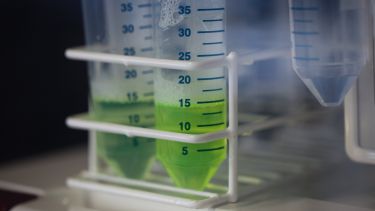Living in a material world
Dr Siddharth Patwardhan discusses his new £2 million project which is a collaboration with the Department of Chemistry at Sheffield, University of Edinburgh and University of Strathclyde. The four year project is funded by the EPSRC and is hoping to have a direct impact on industrial partners.

The project is looking at inventing materials using green chemistry, how either we can get new materials made or replace existing ones by making them in a more sustainable way. Underlying this research is also the manufacturing technologies in making materials on a larger scale:
“If you look at history of materials, lots get invented but never make it to the market. The scale up is a big problem for any material that is invented, they work fantastic in the lab and they’re great materials - but nobody can make them at large scale.”
“We’re looking at a biologically inspired technology that can manufacture nanomaterials and understanding what are the principles and science behind manufacturing them.”
“In process engineering terms transport properties are important, e.g. you need to move molecules around by efficient mixing, and the transport properties change non-linearly as you change the scale. We’re looking at the science behind the scale-dependence of transport properties.”
Dr Patwardhan explains that if you look at nanomaterials preparations - current industrial or lab-based – they are wasteful. An analysis has shown that waste produced from nanomaterials manufacturing is at least a thousand times more than the waste produced in bulk chemical manufacturing:
We’re trying to address this wastefulness issue by looking at new technologies, new methods and new chemistries to make these materials - but in a bioinspired sustainable way.
Dr Siddharth Patwardhan
Professor of Sustainable Chemical and Materials Engineering
He states that as there’s not a lot of understanding about the bioinspired process, we are looking at a combination of modelling, measuring and manufacturing nanomaterials using green methods:
“We’re going to design and make industry-relevant materials using the specifications obtained from our industry partners. The models being developed can be tested and validated or refined. We will eventually be able to set up larger scale processes and test them.”
Dr Patwardhan has filed a patent on this research and is currently talking to industrial partners;
“Companies are interested because it’s going to save them a lot of resources, it opens up new products and markets with a single production line. This research could help them have a competitive advantage, plus the green benefits.”
He goes further to explain that the future of this project is where he will have the design principles and design rules for both product and processes to meet industry needs.
“If they want materials at large scale we can provide a sort of guidance map for them to use. We’ll have a manufacturing set up to test scalability of new inventions and provide independent advice to academics and industry by running tests, assessing scalability.
